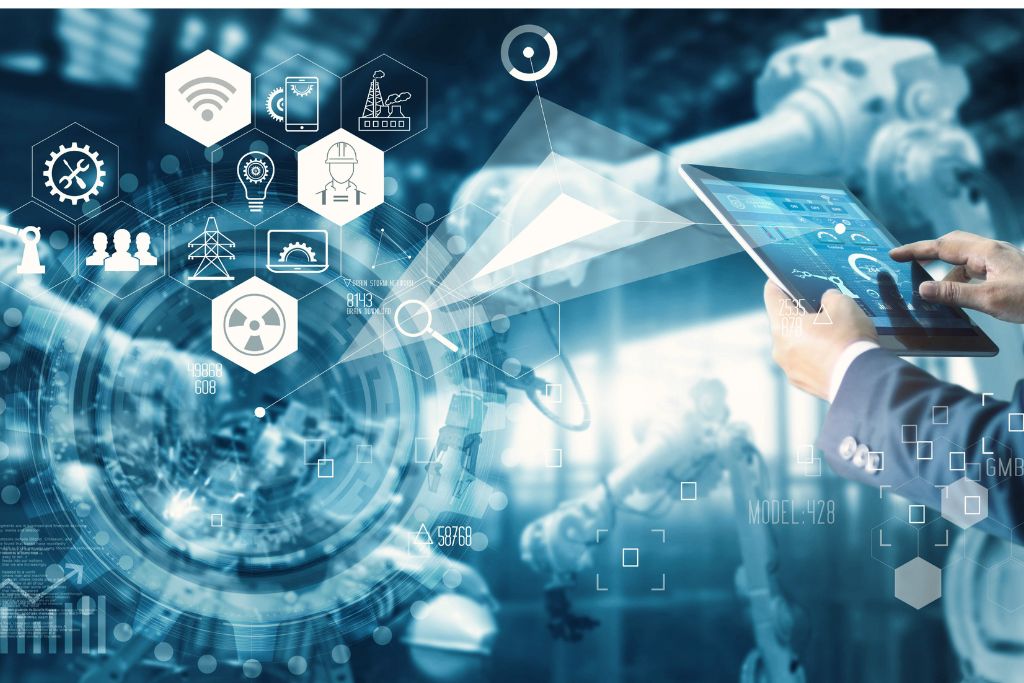From clean water and fresh produce to clean energy manufacturing, robots have become tools for positive change as the world works towards the UN’s Sustainability Goals.
—
Robots are taking on a vital role in the progress of the United Nations’ Sustainable Development Goals, ranging from cleaning the world’s waterways to building sustainable cities. While robots may not be able to help with more socially-focused ideas, they are beneficial in several other ways.
As 2030 draws nearer, these are the top ways robots are helping countries achieve the United Nations’ sustainability goals.
The UN’s Sustainable Development Goals
In 2015, the United Nations established the 17 Sustainable Development Goals (SDGs)– key benchmarks designed to ensure that every nation evolves sustainably. The goals cover social and environmental priorities, ranging from ending poverty to protecting ecosystems on land and sea.
Since the UN created the SDGs, progress has varied between nations, with some countries projected to come much closer to meeting the goals than others.
Robots don’t lend themselves to all of the SDGs, especially the more social goals like gender equality. It is also important to note that many of the robots being applied to SDG projects are still in development or not yet ready to be launched on a large scale.
However, there are several SDGs where robots could be critical to success.
Agricultural Robots: SDG 2
Agricultural robots could be extremely useful for meeting SDG 2, “Zero Hunger”. There is no single solution to end world hunger, but many ideas have been developed throughout the years that will certainly help achieve this goal. One of them is robotics.
Soft robotic grippers, for example, are helping manufacturers automate production for all types of food, even delicate ones like fruits and vegetables. Food-production automation could improve manufacturers’ productivity, making more in less time. Robots can also reduce the likelihood of human employees unintentionally contaminating products, improving food safety.
Similarly, robots are helping farmers meet demand. A group of researchers at Monash University in Australia have developed an apple harvesting robot that can autonomously harvest one apple every seven seconds. The robot uses artificial intelligence to analyse images of the apples and detect whether or not they are ready to pick.
These robots can help farmers harvest food more quickly and for less money, increasing the availability of fresh produce without increasing the price.
You might also like: Why We Should Care About Global Food Security
Air Quality Monitoring Robots: SDGs 3 and 13
Healthy air quality is essential in SDG 3 – “Good Health and Well-being” – as well as SDG 13 – “Climate Action”. Air can have a monumental impact on health and wellness, so people everywhere need to be able to monitor local air quality. The quality is often representative of climate-related issues as well. For example, high emissions indicate increased pollution.
Luckily, robots can help the UN meet its air quality-related SDGs. Drones are the perfect tool for monitoring air quality and collecting real-time information worldwide. A team of researchers from MIT even designed an autonomous drone platform that collects air quality data all on its own. The autonomous drones help make air quality monitoring more accessible to low-income communities, which are frequently impacted most by air pollution.
You might also like: Effects of Air Pollution on the Environment
Clean Energy Robots: SDG 7
Clean energy is one of the pillars of a sustainable future, which is why it gets its own SDG category. Robotics is well equipped to help the world meet SDG 7 – “Affordable and Clean Energy”.
Robots are automating the manufacturing of clean energy infrastructures such as solar panels and wind turbines. Swedish clean energy manufacturer Absolicon has already built a fully automated factory to produce parts for solar heat generators.
Other manufacturers could also use robots to create any clean energy component. They can operate more efficiently by automating production, making more parts for less money. This could help clean energy become more accessible.
Robots can also help maintain clean energy infrastructure. Engineers have developed an autonomous robot that cleans solar panels without water — it doesn’t even run on fuel. The robot moves along solar panels and cleans them off using fabric and air, allowing the panels to maintain peak energy collection.
You might also like: What Are the Advantages and Disadvantages of Solar Energy?
Recycling Robots: SDGs 9, 12, and 13
Like clean energy, recycling is central to a sustainable future. Recycling robots can help the UN achieve numerous SDGs, specifically 9 – ”Industry, Innovation, and Infrastructure“, 12 – “Responsible Consumption and Production”, and 13 – ”Climate Action”.
When it comes to responsible consumption and production, there are already some basic steps most people know to take. For example, opting for LED lights is better for the environment, and recycling plastic helps keep pollution out of the oceans. At least, that’s what ideally happens — plastic waste is often difficult to recycle and reuse.
Robots are automating sorting at recycling centers, resulting in more accurate and efficient recycling. This allows recycling centers to keep up with rising rates of plastic pollution and deliver more high-quality recycled plastic.
Factories can then use this recycled plastic to make sustainable goods such as food packaging. Plus, more efficient recycling means manufacturers can remove more environmental pollution.
Aquatic Robots: SDGs 12 and 14
There is an estimated 150 million tonnes of plastic waste in the world’s oceans. With more entering the world’s waterways every year, it’s no wonder the UN is prioritising cleaning up the oceans and reducing waste.
Robots that can take to the water are helping nations address SDGs 12 – “Responsible Consumption and Production”, and 14 – “Life Below Water”.
Scientists are developing nanobots – extremely small robots – that can decontaminate wastewater using magnets. The robots do not require fuel and can eliminate pollutants like arsenic in hours.
Similarly, a larger robot called the “Ro-boat” has been in development since 2013, aiming to remove pollutants and waste from rivers autonomously. It uses sensors and cameras to detect pollution, then processes the polluted water through a filter to clean it. In tests, engineers found the Ro-boat is capable of cleaning up to 200 tons of waste per year, which could significantly impact communities globally.
You might also like: How Many Marine Animals Die From Plastic Each Year?
Sustainable Development With Robots
The UN’s sustainability goals ensure the future prioritises sustainability and equality for everyone in all countries. By establishing the 17 SDGs, the UN has given the world clear targets to aim for, leaving the door open for innovations that will help achieve them.
Robots have a central role to play. Since the SDG’s establishment in 2015, numerous engineers have developed robots to help nations accomplish their sustainability goals. From cleaner water to fresh produce, robots have become positive tools for working towards the UN’s Sustainable Development Goals.
You might also like: Why the Sustainable Development Goals for 2030 Are More Important Than Ever


















